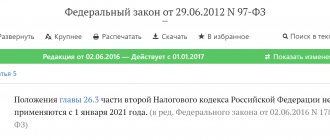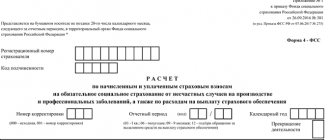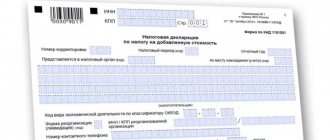For many taxpayers, the stress level of preparing and filing tax returns is comparable to taking an exam or defending a thesis. Collecting information and entering information into all the necessary forms sometimes turns into a rather tedious undertaking. The most difficult point in this process is filling out the declaration correctly, because if it fails, the inspector will return the document and you will have to start all over again. To pass this exam the first time, you need to read the cheat sheet explaining how to fill out the 3-NDFL tax return.
What is 3-NDFL
This form was designed to withhold personal income taxes.
As a rule, personal income tax from employee wages is transferred to the state treasury by the employer, acting in this situation as a tax agent. In all other cases where an individual receives a profit, the tax should be paid independently by submitting a declaration to the Federal Tax Service.
In addition to individuals, the declaration must be submitted by:
- Individual entrepreneurs using OSNO;
- entities receiving income from activities within the framework of private practice;
- tax residents of the Russian Federation receiving profits abroad;
- persons working under a civil agreement.
Also, 3-NDFL should be submitted to everyone who is entitled to a tax deduction.
Tax payment deadlines
The Tax Code of the Russian Federation provides for the calculation and transfer of advance tax payments, as well as the transfer of the annual payment calculated for payment according to the declaration, which takes into account interim payments.
Transfer of advance payments is made once per quarter, after it ends before the 25th day of the month following the reporting period. For the first quarter, payment must be made by April 25, for the six months - by July 25, for 9 months - by October 25.
For annual payments, the deadlines for sending the declaration using the simplified tax system coincide with the tax payment periods and also depend on who the business entity is:
- For organizations - until March 31 of the reporting year.
- For individual entrepreneurs - until April 30 of the reporting year.
Filling out a declaration on paper
Since the final innovations regarding the form were introduced towards the end of 2021, before you start drawing up the document, you should check it for relevance.
This form has a large number of pages, the main ones being the title page and sections with appendices deciphering information regarding tax calculations.
Requirements for registration of 3-NDFL
Basic rules for entering information:
- put a dash in unfilled cells;
- do not apply corrections, including correction fluid;
- do not print on both sides;
- do not use staplers as a connecting element;
- Quantitative indicators should be rounded to whole rubles;
- Enter information in block letters.
It is possible to fill out the form either manually using blue or black ink or on a computer. Only those sheets on which data are entered should be submitted; there is no need to provide blank pages to the inspector.
Many people make mistakes when filling out the 3-NDFL declaration. In December 2021, the Federal Tax Service released a review of the most popular inaccuracies that can cause a completed document to be returned.
Reporting Methods
A declaration under the simplified tax system can be submitted in the following ways:
- Personally by the taxpayer or his representative to the tax authority inspector in paper form with the submission of an electronic file. In this case, two copies must be submitted on paper so that upon acceptance, the inspector can put his mark on the second one and return it to the taxpayer. In some regions, inspectors require a special barcode on the declaration form.
- Send the report via postal service with a list of attachments or courier delivery.
- Use the capabilities of electronic document management. To do this, the taxpayer must have a qualified digital signature and an agreement with a special operator. In addition, the procedure assumes the presence of a separate program or service.
Step-by-step instructions for filling out
Despite the apparent complexity of this task, it only takes a few simple steps to create a 3-NDFL declaration.
Step 1. Specifying personal information
This page is the easiest to complete. In addition to entering passport, contact information and full name, certain codes must be entered in some columns.
Filling features:
- In the “Adjustment No.” column, put “0—” if the document is submitted for the first time.
- The period code, as a rule, is entered automatically - “34”.
- “Tax period”: indicate not the year the declaration was created, but the reporting period.
- “Country code”: put “643”, corresponding to the Russian Federation.
- Taxpayer code: individual – “760”, notary – “730”, lawyer – “740”, arbitration manager – “750”, individual entrepreneur – “720”.
- Document code: birth certificate - “03”, passport - “21”, military ID - “07”, non-resident document - “10”, refugee certificate - “13”.
- Taxpayer status: resident of the Russian Federation - 1, non-resident - 2.
- Code of place of residence and stay: 1 and 2, respectively.
The pages should be numbered as follows: “001”, etc. The section intended for the inspector should be left blank, since he will enter data when submitting the document.
Example of title page design
Step 2. Entering data into Sheet B
When working on a declaration, it is advisable to start filling it out from the last page: first of all, you need to pay attention to Sheet B, then Section 2 and Section 1. You should not lose sight of the fact that on each page you must indicate its number, INN and full name of the taxpayer.
To fill out some columns, you will need data on activity codes, which can be obtained on the website of the Federal Tax Service of the Russian Federation.
Filling features:
- “030”: indicate the amount of profit for the year.
- “040”: enter the amount of annual costs taken into account when calculating personal income tax.
- “050-090”: decipher cost items.
Sheet B should be prepared separately for each type of activity. Afterwards, on the very first sheet, you must indicate the final data in the 3rd group of indicators.
- “110”: indicate the amount of profit, and in line “120” - the amount of expenses; as a rule, for one type of activity they coincide with paragraphs. "030" and "040" respectively.
- “130”: enter data on accrued advance payments.
- “140”: enter the amount of advances paid.
Example of Sheet B design
Step 3. Calculation in Section 2
In column “001” you should indicate the tax rate. If a taxpayer reports on several rates, it is necessary to make a separate calculation for each.
Filling features:
- 010: indicate the final amount of profit, which can be taken from line “110” of Sheet B.
- 030: enter the total amount of profit (030 = 010 – 020).
- 040: enter the tax deduction amount.
- 060: calculate the tax based on the formula specified in the form.
- 070: Calculate the income tax amount.
- 100: indicate the amount of all paid advances for personal income tax, which can be transferred from column “140” of Sheet B.
- 130: calculate the tax subject to withholding.
Example of Section 2 design
Step 4. Compilation of data in Section 1
In this section you should enter the summary data for all pages of the declaration:
- 010: if tax is payable, code “1” should be entered; if a tax deduction is requested, code “2”.
- 030: enter the OKTMO code, which can be found on the website of the Federal Tax Service of the Russian Federation.
- 040: indicate the amount of tax to be paid by transferring the data from line “130” of Section 2.
Sample of filling out Section 1
We should not forget that dashes should be placed in all columns that do not contain data.
Deadline for submitting a declaration under the simplified tax system in 2018
The entire procedure for calculating tax according to the simplified tax system and submitting a declaration to the Federal Tax Service is determined in the Tax Code of the Russian Federation. The provisions of this regulatory act establish that the reporting period for a single tax under the simplified tax system is determined by the calendar year, therefore the declaration under the simplified tax system is sent once a year, after the period ends.
The days for submitting these reports depend on how the business entity is registered with the INFS:
- If the activity is carried out as an individual entrepreneur, then the deadline for submitting a declaration under the simplified tax system is calculated on April 30 of the year following it.
- When the taxpayer is registered with the Federal Tax Service as a legal entity, for example, an LLC, then the deadline for sending a declaration under the simplified tax system is March 31 of the following year.
In addition, it is necessary to take into account what day these deadlines fall on. If it is a weekend or a holiday, then the deadline is transferred to the next day of work after this set date.
For example, a declaration under the simplified tax system in 2021 will be submitted for the previous year.
For legal entities, the declaration under the simplified tax system 2021 is sent before 04/2/2018, for individual entrepreneurs - before 04/30/2018. Attention! Tax legislation separately considers the deadlines for submitting reports to the simplified tax system if a company or individual entrepreneur is closing a business.
They do not have to wait until the end of the calendar year. These entities must submit a simplified declaration no later than 25 days from the date of deregistration. If the taxpayer does not carry out his activities, he is still obliged to send tax reports to the Federal Tax Service within the established time limits. The simplified tax system involves filing zero reports.
Basic mistakes when drafting a document
Many years of experience of inspectors in accepting declarations allowed us to consolidate the main errors that applicants make when filling out.
Table 1. Errors when filling out the document
| Error | Description |
| Mistake #1 | When preparing the title page, the correction number is not indicated. When submitting a declaration for the first time, for example, you should enter the number “0”. |
| Mistake #2 | The tax resident category code is entered incorrectly. An individual who opened an individual entrepreneur must enter the code “720” in any case, even if he was deregistered during the reporting period or did not receive profit from commercial activities. |
| Mistake #3 | Incorrect OKATO code. Most applicants transfer it from the 2-NDFL certificate, but it is necessary to indicate the code at the place of residence. |
| Mistake #4 | Incorrect interpretation of the “Place of residence” column. You need to enter data at the place of registration, and not at your actual location. |
| Mistake #5 | Lack of signature on each page of the declaration. |
| Mistake #6 | Section 6 does not always indicate KBK, OKATO and the amount of tax to be paid additionally or refunded. |
The text of the declaration contains tips, and if you carefully fill it out, you can achieve success in this difficult field the first time.
Where are the reports submitted?
According to the general rules, a declaration under the simplified tax system should be sent to the tax authorities that registered the entity, which means:
- For legal entities, the single tax report should be sent to their location (legal address);
- Entrepreneurs must submit a declaration at the place of their registration, which is recorded in the passport. This must be taken into account by those individual entrepreneurs who are registered in one region, but actually work in another.
Features of receiving a deduction for treatment
You can get a full refund of the amount spent on treatment only if it is classified as expensive. The list of such types of medical services is indicated in the text of Decree of the Government of the Russian Federation No. 201 of March 19, 2001.
If the treatment is not expensive, expenses accepted for deduction are limited to the amount of 120,000 rubles. You should know that this amount is taken into account along with other expenses incurred during this period - for training, payment of funds for the funded part of the pension, voluntary pension insurance and non-state pension provision.
You can get an income tax refund for your treatment, as well as for your husband (wife), children, and parents. You can use this right within three years from the date of incurring expenses for medicines and treatment.
Excise taxes
| On what basis: | Takes effect: |
| Federal Law No. 401-FZ of November 30, 2016 | from January 1, 2017 |
Excise taxes will increase by an average of 4%. The greatest changes affected alcohol, tobacco, gasoline and diesel fuel. In addition to the familiar cigarettes, excise taxes on their electronic analogues and heating tobacco have also increased.
The Federal Law “On Amendments to Parts One and Two of the Tax Code and Certain Legislative Acts of the Russian Federation” regulates the increase in excise taxes.
During the planning period designated as 2017-2019, excise taxes on almost all types of alcohol and tobacco will increase. For example, excise tax rates on champagne prepared using foreign raw materials will increase to 36 rubles; we recall that previously the rate was 26 rubles.
An interesting fact is that non-alcoholic beer was not included in the list of goods affected by the increase in excise rates.









